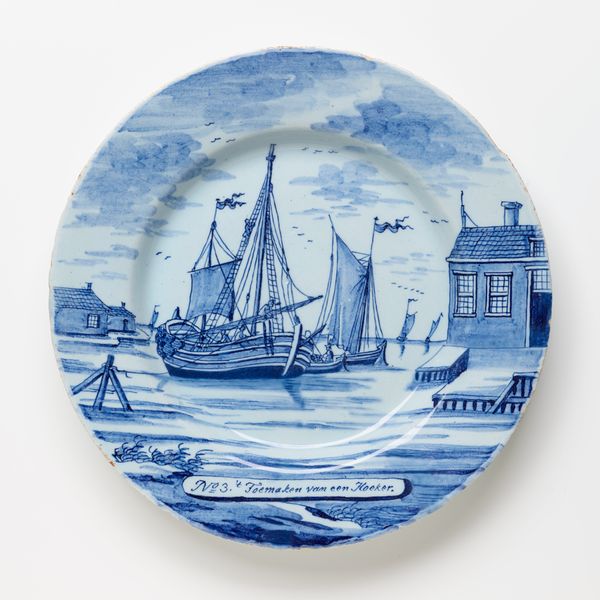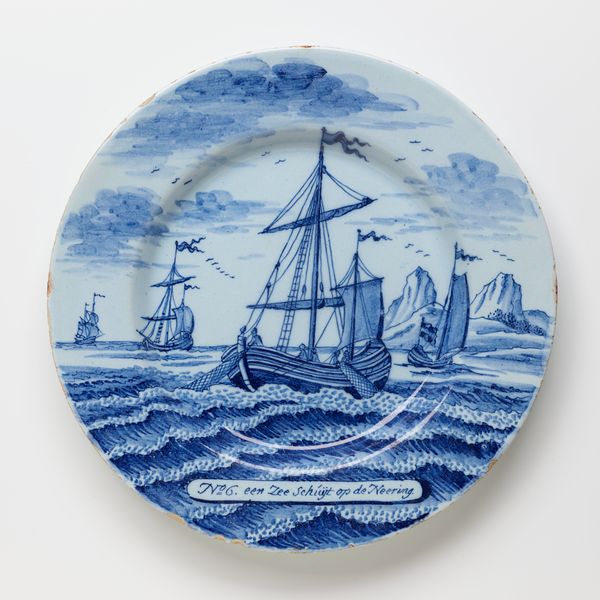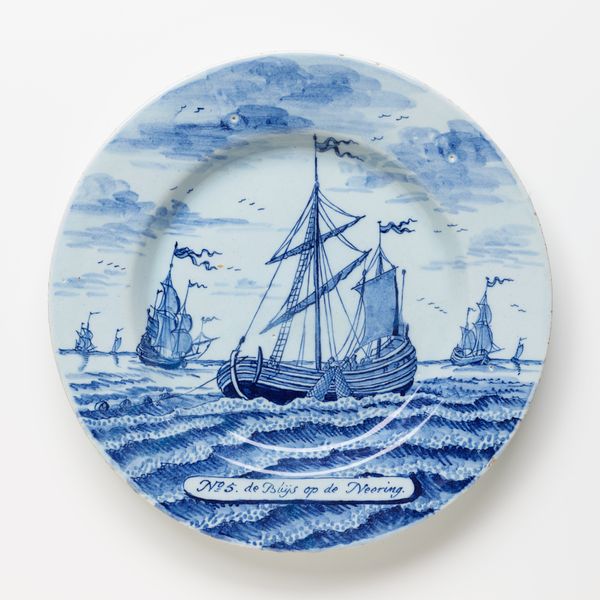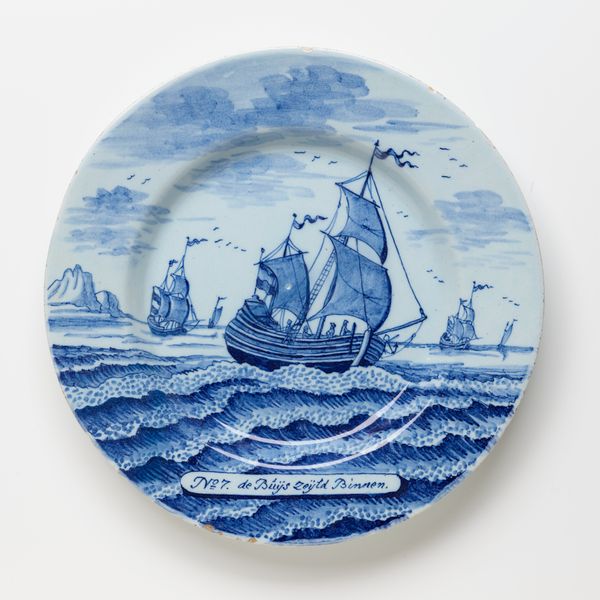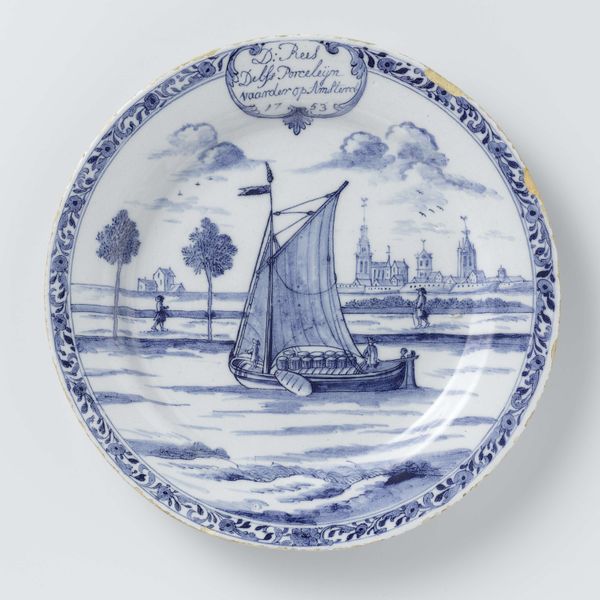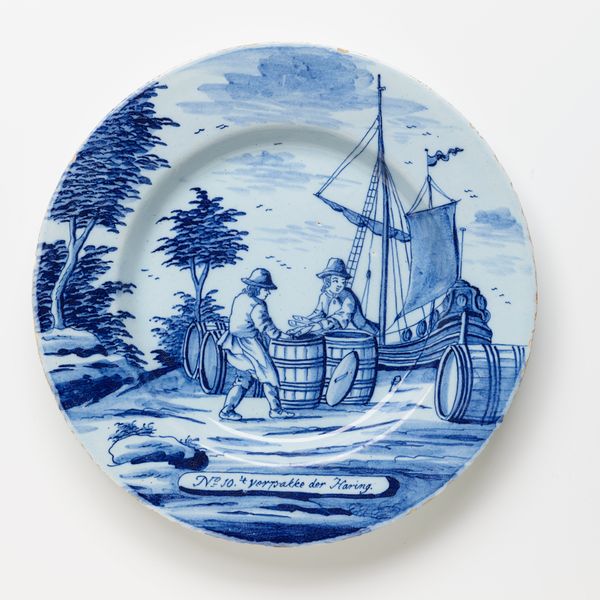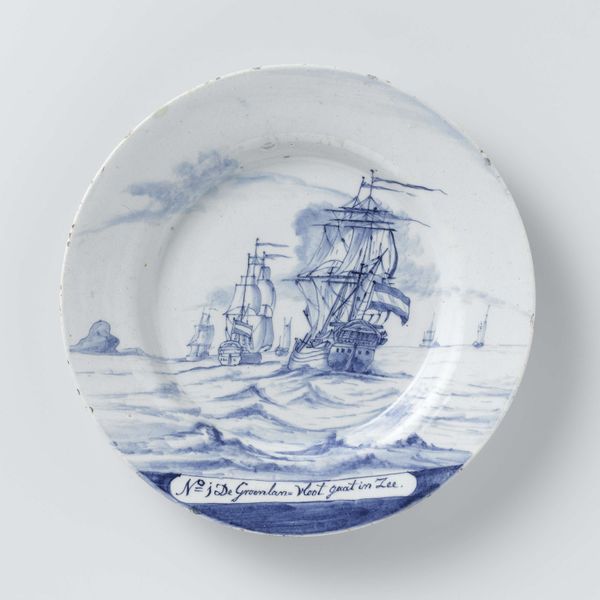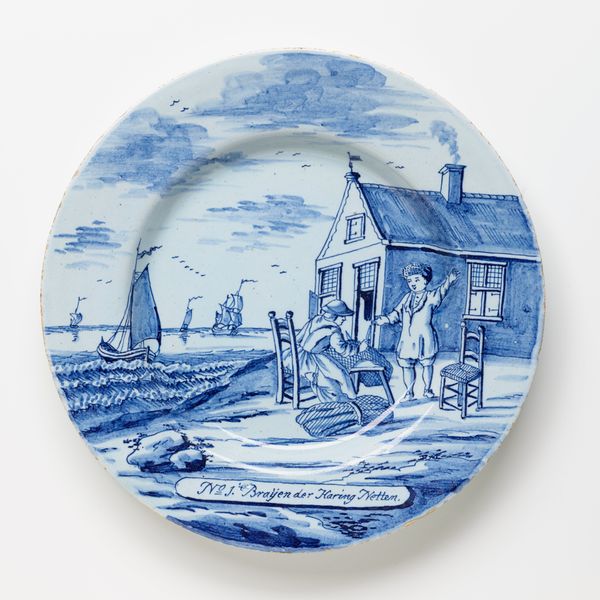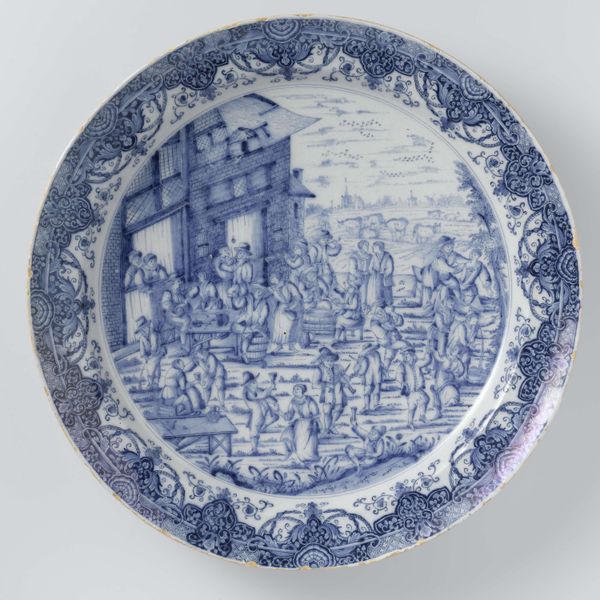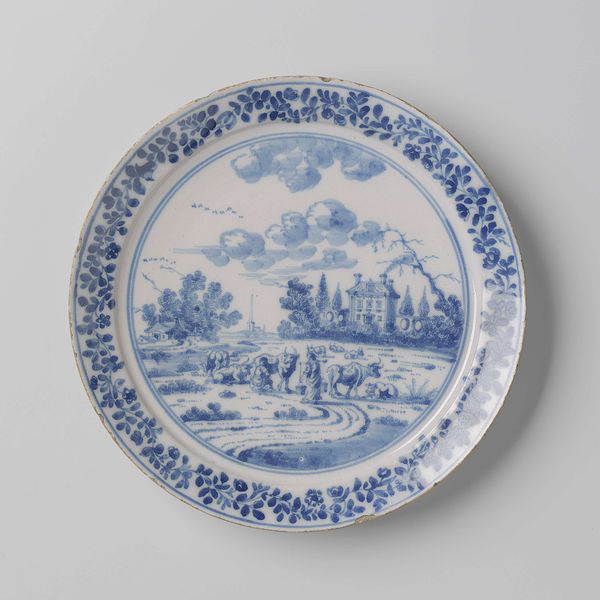
painting, ceramic
#
dutch-golden-age
#
painting
#
ceramic
#
orientalism
#
genre-painting
#
watercolor
Dimensions: 1 × 9 × 9 in. (2.54 × 22.86 × 22.86 cm)
Copyright: Public Domain
Curator: Ah, here we have "No. 2" crafted around 1780 by the Porcelain Axe Factory, also known as Porceleyne Bijl. It resides here at the Minneapolis Institute of Art. It's ceramic. Editor: Delftware, right? That cool, crisp blue just sings of sea breezes and trade winds to me, doesn’t it to you? There’s such a calm energy, like watching the tide roll in. Curator: Indeed. This piece exemplifies the fusion of Dutch genre painting with the ceramic tradition of Delftware, demonstrating how industrial production methods could disseminate artistic styles across the market. The blue monochrome, in particular, references the period's craze for imported Asian porcelain and its reproduction by European manufacturers. Editor: A porcelain reproduction... It feels meta. I am drawn to the casual arrangement of vessels in the harbor though, with a tall, dominant sailboat at center! The artist captured their day-to-day life… It invites contemplation, doesn’t it? Curator: Well, yes, but it's essential to remember that genre painting from this period frequently idealizes working-class life for consumption by wealthier demographics. Each vessel represents global trading patterns, labor exploitation, and shifting taste economies of that era. Editor: Perhaps, but doesn’t that romantic lens also provide a human connection? Even through commerce and exploitation, artists responded to their surroundings with emotion. That boat riding on swirling waves seems free somehow. It takes my imagination there... despite knowing the larger historical contexts. Curator: Precisely. Its beauty belies the exploitative economic structure it represents. It’s this very tension between aesthetic appeal and sociopolitical context that constitutes its enduring value and critical importance within museum collections. Editor: Yes! And, isn’t it remarkable to imagine the skilled workers who transferred a drawn image, drop by careful drop, onto earthenware that once warmed some Dutch family’s meal! Thank you. Curator: It is that intersection, labor and consumer, in which meaning comes alive. Thank you.
Comments
minneapolisinstituteofart about 2 years ago
⋮
This series of twelve plates is painted with scenes related to fishing for herring. While undistinguished in appearance, this silver fish was an abundant source of food in the North Sea and supported a vast fishing industry in the Netherlands. Herring fishing accounted for such a large percentage of the wealth of the Dutch Republic that Amsterdam was said to have been built on herring bones.
Join the conversation
Join millions of artists and users on Artera today and experience the ultimate creative platform.

